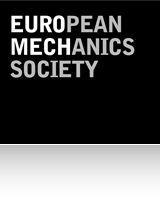528 – Wind Energy and the impact of turbulence on the conversion process
Date:
22 February 2012 – 24 February 2012
Location:
Oldenburg, Germany
Website:
Chairperson:
Dr. Joachim Peinke
Institute of Physics & ForWind
University of Oldenburg
D 26111 Oldenburg, Germany
Email: peinke@uni-oldenburg.de
Co-chairperson
Prof. Stefan Ivanell
Cramérgatan 3
Gotland University
SE-621 67 Visby, Sweden
Ph: +46 498 299733
Email: Stefan.Ivanell@hgo.se
Joint colloquium EUROMECH (J. Peinke) with ERCOFTAC and EAWE
This is made possible thanks to the European Project E-CAero "EUROPEAN COLLABORATIVE OF AERONAUTICAL RESEARCH AND APPLICATIONS" (www.e-caero.com)
The wind energy conversion process is in first line a fluid mechanical problem. Wind conditions on small, medium and and large scales are characterized by turbulence thus it becomes more and more important to handle properly the impact of turbulence on the wind energy conversion process. The aspects range from meteorological aspects- like LES modelling of wind flow conditions in complex terrain to aspects of short time changing wind conditions for the emergence of stall effects. There is a big need to transfer advanced methods from basic fluid mechanics to the application of wind energy. Thus it is intended by this meeting to bring together experts from EUROMECH and from the new growing Wind energy community.
Particular topics will be
CFD with focus on LES. Advances in the simulation of wind conditions in complex terrain as well as simulations of the flow in and behind a wind park.
Flow around a wind turbine. This topic is approached from different directions. Different CFD codes are in use to resolve the unsteady flow conditions around a moving rotor blade. Basis of many approaches are the measurement data from the MEXICO project. At the same time different experimental approaches are currently under the way, ranging from small modell experiments in wind tunnels to free field measurements with LIDAR.
Dynamic stall is on of the central aspects of the flow situation around roto blades if a wind turbine.
Turbulent inflow conditions. The dynamics of a wind turbine is not only determined by its own flow effects but also by the highly turbulent inflow conditions. There is a big demand for good synthetic turbulent inflow conditions for numerical simulations as well as for experimental studies. Modes of turbulent wind fields as well as the uses of active grids in wind tunnels are actually investigated.
Flow control. As a consequence of the turbulent inflow conditions and it changing working conditions for a blade the interest in active control as used fro airplanes is actually increasing.
Effects of turbulence on the wind turbine are manyfold, ranging from oscillating loads, vibrating modes of mechanical parts to highly fluctuating power generation. Here we want to focus on effects which can be traced back to the turbulent nature of the wind conditions.
